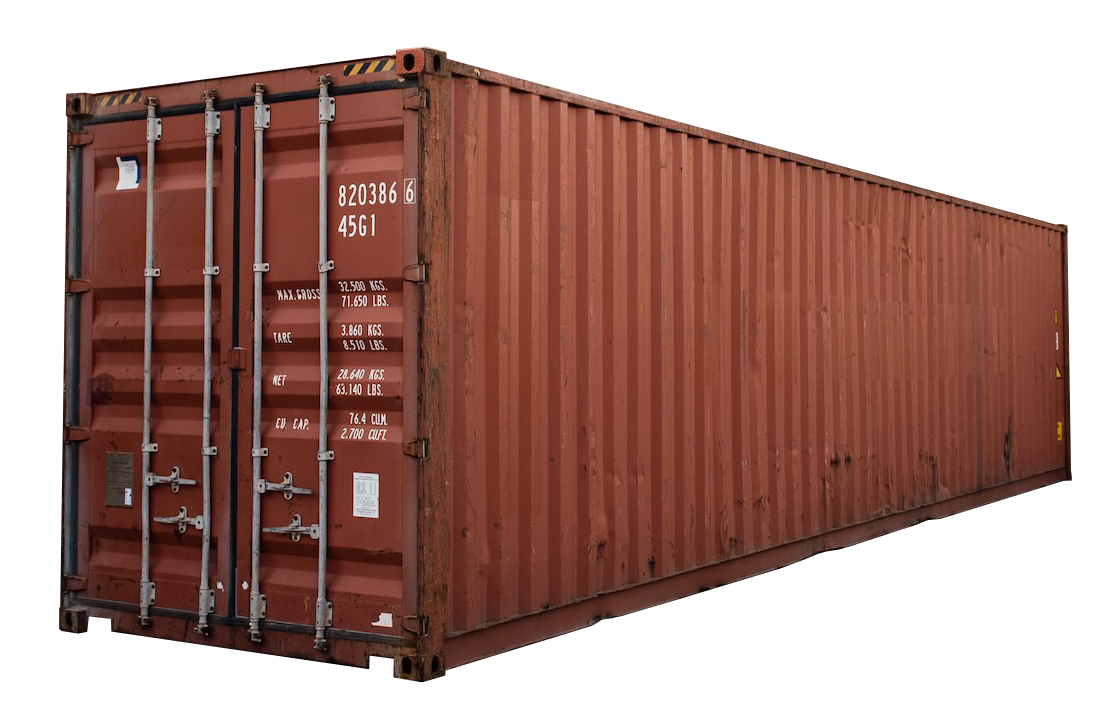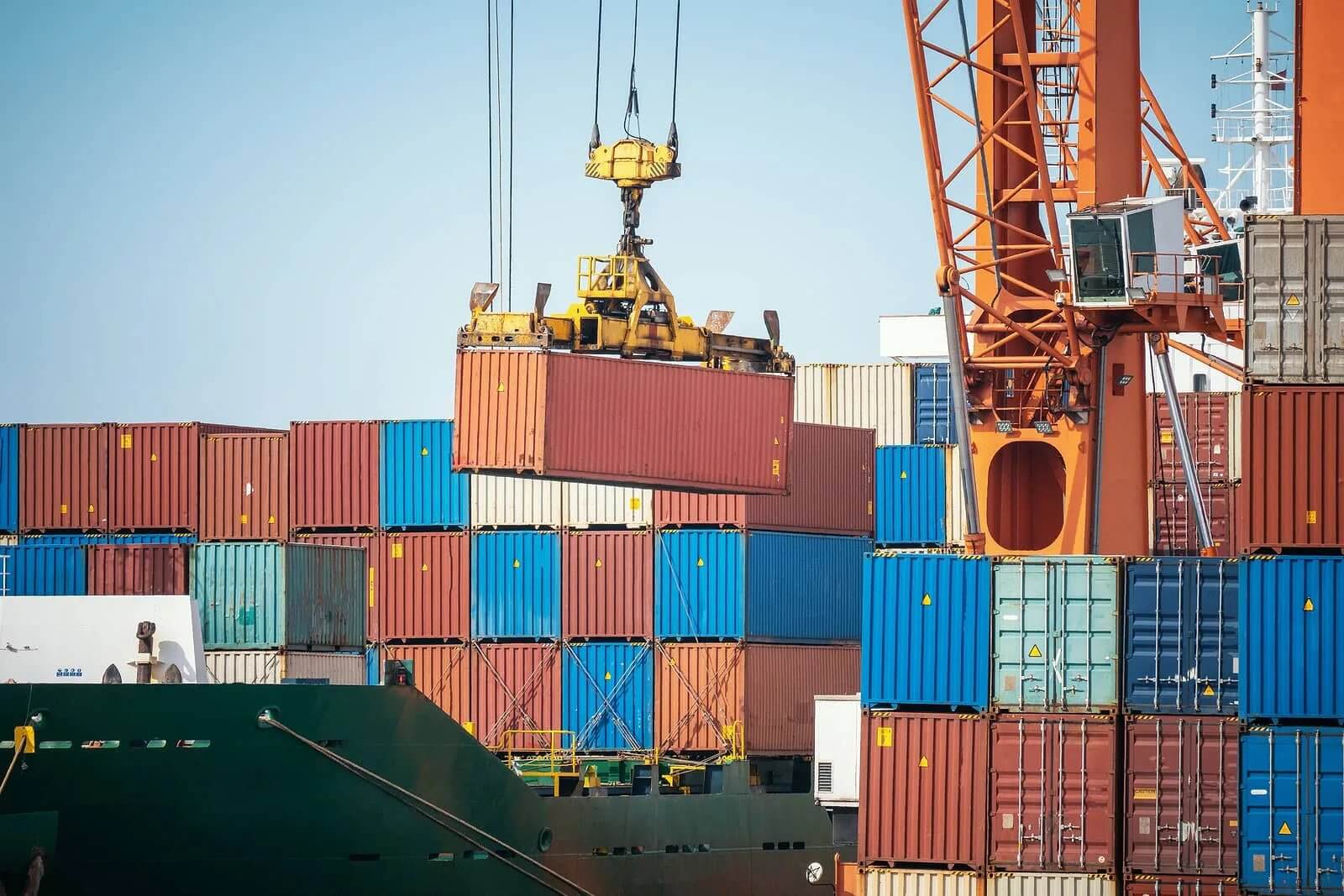Everything You Need to Learn About Shipping Containers and Their Practical Applications
Shipping containers have developed from mere tools for transport to functional frameworks with numerous functional applications. Their durable layout and basic sizing make them optimal for an array of usages past delivery. From cutting-edge housing options to lasting farming, their adaptability is notable. Yet, the opportunities do not end there. Discovering their different features discloses surprising understandings right into contemporary challenges and creative solutions. What various other roles could these containers play in today's globe?
The Layout and Structure of Shipping Containers

Inside, containers are created to maximize space, often including wood or steel flooring that can sustain significant weight. Ventilation systems may be incorporated to stop moisture build-up, which is vital for sensitive freight. Additionally, reinforced corners enable easy handling by forklifts and cranes, facilitating seamless loading and discharging. This thoughtful style and framework contribute to the containers' versatility across various shipping and storage space applications.
Advantages of Utilizing Shipping Containers
While many transport techniques have their advantages, the usage of shipping containers sticks out because of their unequaled adaptability and performance. Shipping containers supply a standard size, making them very easy to stack and transfer throughout numerous settings of transport, consisting of ships, trains, and trucks. This standardization minimizes loading and discharging times, thereby boosting overall efficiency.
Additionally, delivering containers are constructed from resilient materials, supplying robust protection for items during transit. They are weather-resistant and safe, reducing the risk of damages from ecological aspects or theft. In addition, the modular style of delivery containers enables easy personalization, making it possible for companies to adapt them for different functions, such as storage space or mobile workplaces.
Their transportability and cost-effectiveness make delivery containers an appealing alternative for services looking to enhance logistics and supply chain operations. These advantages contribute to the growing appeal of delivery containers in different industries.
Creative Real Estate Solutions With Shipping Containers
Cutting-edge real estate solutions have arised as an exciting application of delivery containers, leveraging their intrinsic strengths for residential usage. These functional structures provide a sustainable choice to typical structure materials, commonly at a portion of the cost. Architects and designers have changed containers right into stylish, practical homes, accommodating varied way of lives and preferences.

Shipping containers are eco pleasant, advertising recycling and reducing waste. Lots of jobs focus on power performance, integrating solar panels and green roofings. As urbanization rises, these ingenious real estate solutions offer a useful action to housing scarcities while fostering a special building visual.
Shipping Containers in Retail and Pop-Up Shops
A growing variety of stores are turning to delivering containers as a vibrant option for retail areas and pop-up shops. These versatile structures supply a cost-effective alternative to typical storefronts, allowing companies to produce distinct, eye-catching environments that bring in consumers. Their modular layout allows easy transportation and setup, making them ideal for seasonal or short-lived retail places.
Stores can tailor delivery containers to reflect their brand name identity, changing them into visually appealing shops that stick out in congested markets. The portable nature of containers likewise urges efficient usage of area, permitting imaginative layouts that maximize customer circulation and involvement. Shipping containers can be located in unusual places, such as uninhabited great deals or metropolitan parks, enhancing ease of access and foot website traffic.

As the retail landscape evolves, delivering containers supply a innovative and adaptable service that satisfies the needs of modern-day consumers while improving the shopping experience.
Sustainable Farming Practices Utilizing Shipping Containers
Sustainable farming practices significantly include delivery containers as ingenious services for agriculture - Shipping Containers. These container farms use hydroponics to optimize area and resource performance, providing an economical approach to food manufacturing. By changing delivery containers into farming centers, farmers can attend to food safety and environmental worries at the same time
Container Farming Perks
While conventional farming deals with difficulties such as land scarcity and climate adjustment, container farming provides a practical alternative that optimizes room and sources. This ingenious technique enables year-round crop manufacturing in controlled settings, reducing reliance on weather problems. Container farms use less water than standard farming, advertising sustainability and preservation. They can be established in metropolitan areas, bringing fresh fruit and vegetables closer to customers and lowering transportation emissions. Furthermore, the modular nature of delivery containers allows scalability, permitting farmers to adjust operations based on demand. Container farming also minimizes pesticide usage by developing a confined ecological community, ultimately enhancing food safety. As city populaces grow, container farming becomes a sensible solution to fulfill the increasing need for local, sustainable food resources.
Hydroponics in Containers
Hydroponics, which permits plants to expand without dirt by utilizing nutrient-rich water, flourishes within the confines of shipping containers, making it an optimal method for city farming. These containers produce a controlled atmosphere that enhances light, temperature, and moisture, allowing year-round farming. With limited room in metropolitan locations, delivering containers offer a scalable option for expanding fresh fruit and vegetables. Hydroponic systems within containers can include various methods, such as nutrient film technique (NFT) and deep water culture (DWC), which take full advantage of yield while decreasing water usage. This ingenious technique not only improves food safety but likewise lowers the carbon footprint related to traditional farming approaches. Consequently, hydroponics in containers stands for a forward-thinking service for lasting metropolitan food manufacturing.
Cost-Effective Agriculture Solutions
As food production faces increasing challenges because of environment adjustment and urbanization, delivering containers arise as an affordable option for farming. These flexible structures can be repurposed for different sustainable farming methods, such as hydroponics and upright farming. By utilizing regulated environments within containers, farmers can maximize growth cycles and lower source intake, consisting of water and plant foods. Furthermore, delivering containers can be tactically positioned in metropolitan areas, minimizing transport costs and enhancing accessibility to fresh fruit and vegetables. Their modular nature enables for scalability, making it possible for farmers to increase operations as need expands. Additionally, repurposing containers adds to lose decrease, straightening with green farming campaigns. Generally, delivering containers existing innovative chances for reliable and lasting food manufacturing.
Emergency and Catastrophe Alleviation Applications of Shipping Containers

Organizations frequently make use of delivery containers to develop mobile facilities or field health centers, guaranteeing that medical care gets to those in requirement. Furthermore, they can be transformed right into command facilities for collaborating rescue operations, thus boosting organizational efficiency during situations.
Furthermore, containers can be customized to store important products such as water, food, and garments, safeguarding products up until they are distributed. Their wheelchair enables them to be quickly delivered to numerous areas, making certain that assistance arrives where it is most quickly needed. Overall, shipping containers play a critical function in boosting the efficiency of disaster relief campaigns worldwide.
Often Asked Concerns
Just How Are Shipping Containers Transported From One Place to An Additional?
Shipping containers are transferred through trains, ships, and vehicles, using cranes for packing and discharging. This multi-modal transportation system makes sure efficient activity throughout land and sea, connecting global supply chains and assisting in international trade.
What Is the Average Lifespan of a Delivery Container?
The average get more info life expectancy of a delivery container normally varies from 10 to 25 years, relying on upkeep, use, and environmental aspects. Appropriate care can extend their functionality, while overlook might cause wear and tear and damage.
Can Shipping Containers Be Modified for Different Uses?
Yes, delivering containers can be changed for numerous usages. They serve as homes, workplaces, pop-up shops, and storage units. Their flexibility permits creative adjustments, making them suitable for a vast array of applications.
Are Shipping Containers Eco-friendly?
Shipping containers can be eco-friendly, as they promote repurposing and reusing. Their resilience lowers waste, while their use in alternative real estate and companies lessens the demand for new products, contributing to sustainable techniques.
Exactly how Do I Choose the Right Size Shipping Container?
To pick the best size delivery container, one need to analyze storage space needs, think about the intended usage, and evaluate room accessibility - shipping container storage. Common sizes include 20-foot and 40-foot containers, each offering different storage and transport demands properly
Ingenious real estate services have emerged as an amazing application of delivery containers, leveraging their inherent toughness for residential use. The versatility of shipping containers enables for creative layouts, from single-unit houses to complicated multi-container setups. Lasting farming methods significantly incorporate shipping containers as cutting-edge services for farming. In addition, the modular nature of delivery containers allows scalability, permitting farmers to readjust operations based on need. Hydroponics, which allows plants to expand without dirt by utilizing nutrient-rich water, prospers within the boundaries of delivery containers, making it a perfect approach for city agriculture.